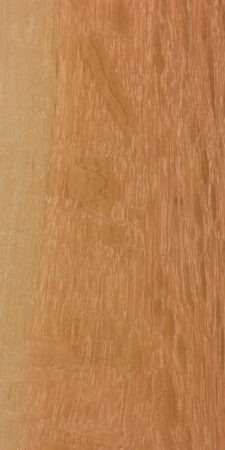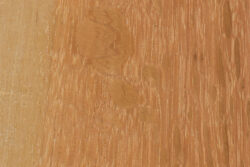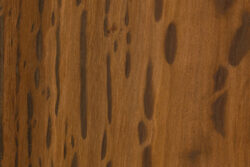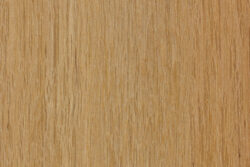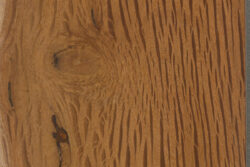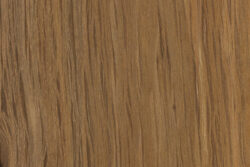Common Name(s): Sheoak, Australian oak
Distribution: Australia
Genus Size: About 60 species (with an additional 100 species names treated as synonyms)
Mechanical Characteristics: Wood of most species is of medium to high density, with respectable strength and hardness—though most species in the genus are not well researched. Grain is usually straight, with good workability despite many species’ higher weight.
Visual Characteristics: Heartwood color ranges from light brown to darker reddish brown. Contrasting sapwood is a light yellow, though not always sharply demarcated from heartwood. A prominent visual characteristic of the genus is large aggregate rays, which give a very distinctive ray fleck pattern which can generally be seen even on flatsawn surfaces.
Identification: In addition to the very large and distinctive aggregate rays (which, along with the closely related Casuarina genus, are among the largest in the world), Allocasuarina species also have exclusively solitary pores and banded parenchyma.
Comments: Species in this genus were all formerly placed in the Casuarina genus, dating back to the very original classification by Carl Linnaeus in 1759. It was not until the 1980s with Australian botanist Lawrence A. S. Johnson that the Casuarinaceae family began to be divided into different genera, the most substantial of which was Allocasuarina. (Because of this more recent division, it is very common for older texts to list many species in the Casuarina genus.)
Although many species bear oak or she-oak in their common name, Allocasuarina is not closely related to true oaks in the Quercus genus. The etymology of the common name sheoak is ambiguous. Both oaks and sheoaks share a similar ray-flecked appearance on quartersawn surfaces.
Related Content:

